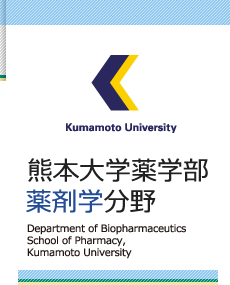J Cachexia Sarcopenia Muscleに論文が掲載されました。(慢性腎臓病が誘発する骨格筋萎縮における酸化アルブミンの関与とその分子機構解明)
Kato H, Watanabe H, Imafuku T, Arimura N, Fujita I, Noguchi I, Tanaka S, Nakano T, Tokumaru K, Enoki Y, Maeda H, Hino S, Tanaka M, Matsushita K, Fukagawa M, Maruyama T.
Advanced oxidation protein products contribute to chronic kidney disease-induced muscle atrophy by inducing oxidative stress via CD36/NADPH oxidase pathway.
J Cachexia Sarcopenia Muscle. 2021 Oct 2. doi: 10.1002/jcsm.12786.
Abstract
Background: Sarcopenia with chronic kidney disease (CKD) progression is associated with life prognosis. Oxidative stress has attracted interest as a trigger for causing CKD-related muscular atrophy. Advanced oxidation protein products (AOPPs), a uraemic toxin, are known to increase oxidative stress. However, the role of AOPPs on CKD-induced muscle atrophy remains unclear.
Methods: In a retrospective case-control clinical study, we evaluated the relationship between serum AOPPs levels and muscle strength in haemodialysis patients with sarcopenia (n = 26, mean age ± SEM: 78.5 ± 1.4 years for male patients; n = 22, mean age ± SEM: 79.1 ± 1.5 for female patients), pre-sarcopenia (n = 12, mean age ± SEM: 73.8 ± 2.0 years for male patients; n = 4, mean age ± SEM: 74.3 ± 4.1 for female patients) or without sarcopenia (n = 12, mean age ± SEM: 71.3 ± 1.6 years for male patients; n = 7, mean age ± SEM: 77.7 ± 1.6 for female ). The molecular mechanism responsible for the AOPPs-induced muscle atrophy was investigated by using 5/6-nephrectomized CKD mice, AOPPs-overloaded mice, and C2C12 mouse myoblast cells.
Results: The haemodialysis patients with sarcopenia showed higher serum AOPPs levels as compared with the patients without sarcopenia. The serum AOPPs levels showed a negative correlation with grip strength (P < 0.01 for male patients, P < 0.01 for female patients) and skeletal muscle index (P < 0.01 for male patients). Serum AOPPs levels showed a positive correlation with cysteinylated albumin (Cys-albumin), a marker of oxidative stress (r2 = 0.398, P < 0.01). In the gastrocnemius of CKD mice, muscle AOPPs levels were also increased, and it showed a positive correlation with atrogin-1 (r2 = 0.538, P < 0.01) and myostatin expression (r2 = 0.421, P < 0.05), but a negative correlation with PGC-1α expression (r2 = 0.405, P < 0.05). Using C2C12 cells, AOPPs increased atrogin-1 and myostatin expression through the production of reactive oxygen species via CD36/NADPH oxidase pathway, and decreased myotube formation. AOPPs also induced mitochondrial dysfunction. In the AOPPs-overloaded mice showed that decreasing running time and hanging time accompanied by increasing AOPPs levels and decreasing cross-sectional area in gastrocnemius.
Conclusions: Advanced oxidation protein products contribute to CKD-induced sarcopenia, suggesting that AOPPs or its downstream signalling pathway could be a therapeutic target for the treatment of CKD-induced sarcopenia. Serum AOPPs or Cys-albumin levels could be a new diagnostic marker for sarcopenia in CKD.
Keywords: Advanced oxidation protein products; Albumin; Biomarker; Chronic kidney disease; Muscle atrophy; Oxidative stress.
年月別
- 2021年10月
- 2021年9月
- 2021年8月
- 2021年7月
- 2021年6月
- 2021年5月
- 2021年4月
- 2021年3月
- 2020年12月
- 2020年11月
- 2020年10月
- 2020年8月
- 2020年7月
- 2020年5月
- 2020年4月
- 2020年3月
- 2020年1月
- 2019年11月
- 2019年10月
- 2019年9月
- 2019年8月
- 2019年7月
- 2019年5月
- 2019年1月
- 2018年11月
- 2018年9月
- 2018年6月
- 2018年5月
- 2018年4月
- 2018年3月
- 2018年2月
- 2017年12月
- 2017年11月
- 2017年10月
- 2017年8月
- 2017年7月
- 2017年6月
- 2017年5月
- 2017年4月
- 2017年3月
- 2017年2月
- 2016年12月
- 2016年11月
- 2016年9月
- 2016年8月
- 2016年7月
- 2016年6月
- 2016年5月
- 2016年4月
- 2016年3月
- 2015年12月
- 2015年10月
- 2015年9月
- 2015年8月
- 2015年7月
- 2015年6月
- 2015年5月
- 2015年2月
- 2014年12月
- 2014年11月
- 2014年10月
- 2014年9月
- 2014年8月
- 2014年7月
- 2014年6月
- 2014年5月
- 2014年4月
- 2014年3月
- 2014年2月
- 2014年1月
- 2013年12月
- 2013年11月
- 2013年10月
- 2013年8月
- 2013年7月
- 2013年6月
- 2013年5月
- 2013年4月
- 2013年2月
- 2013年1月
- 2012年11月
- 2012年10月
- 2012年7月
- 2012年5月
- 2012年4月
















